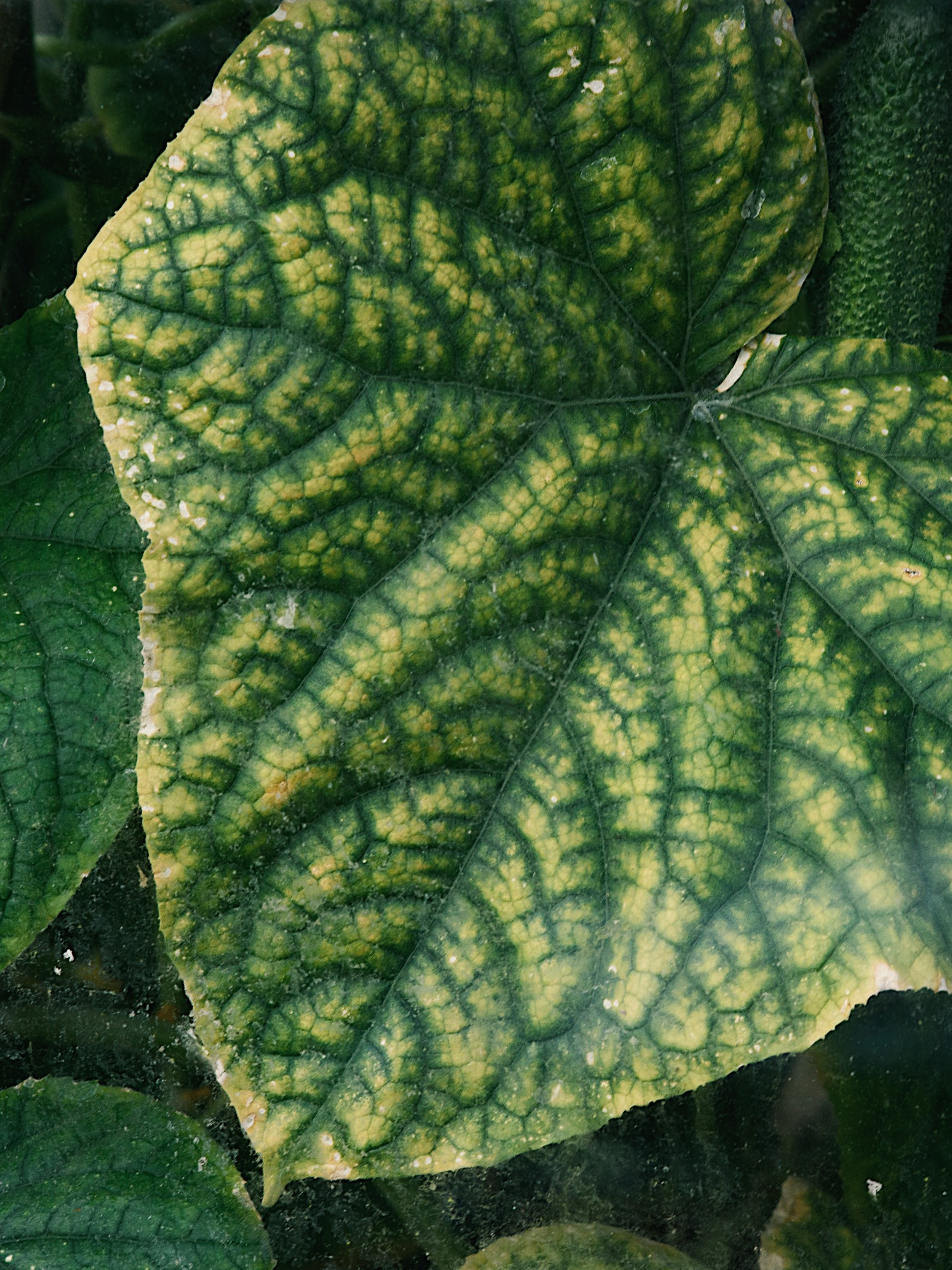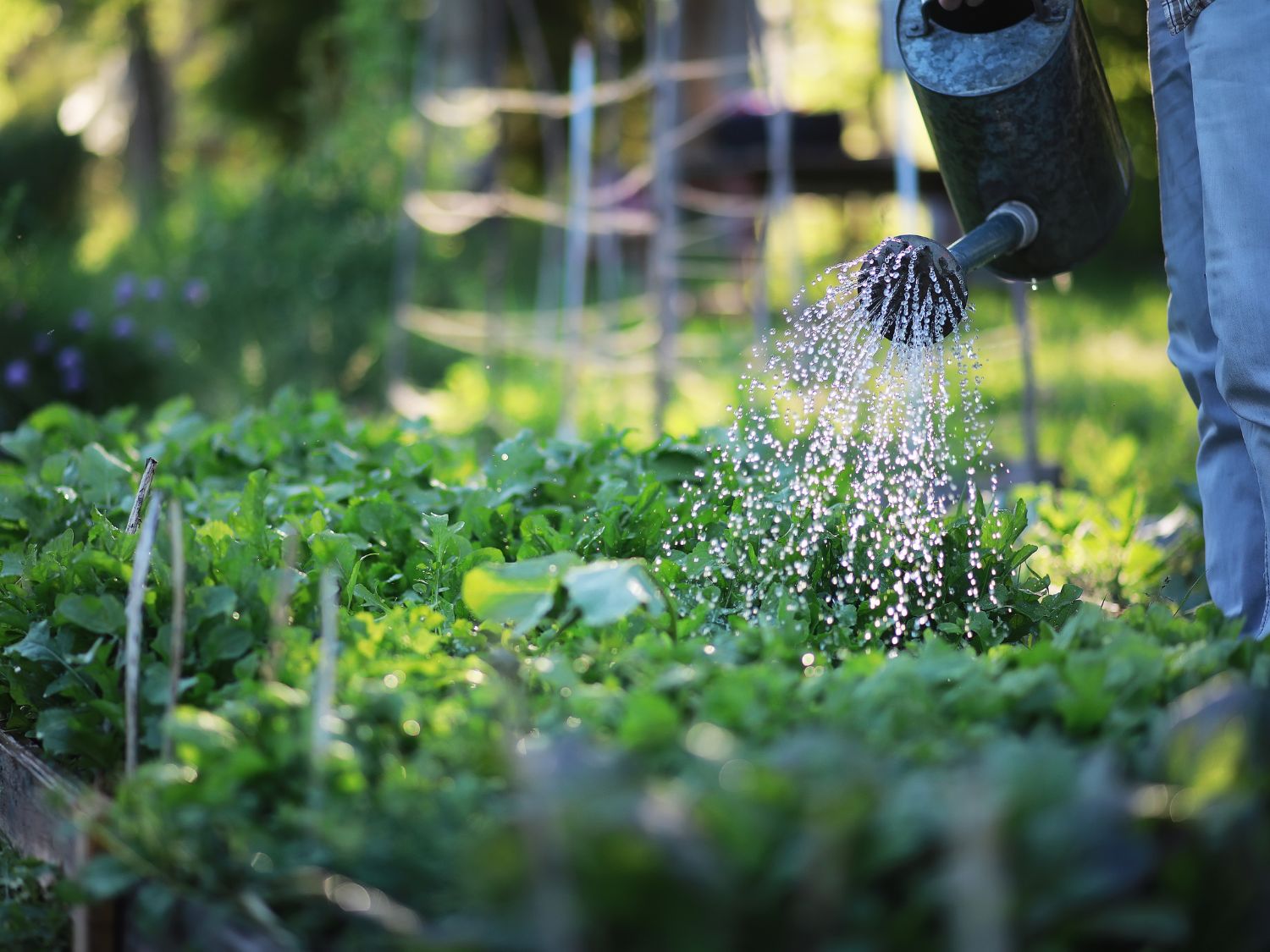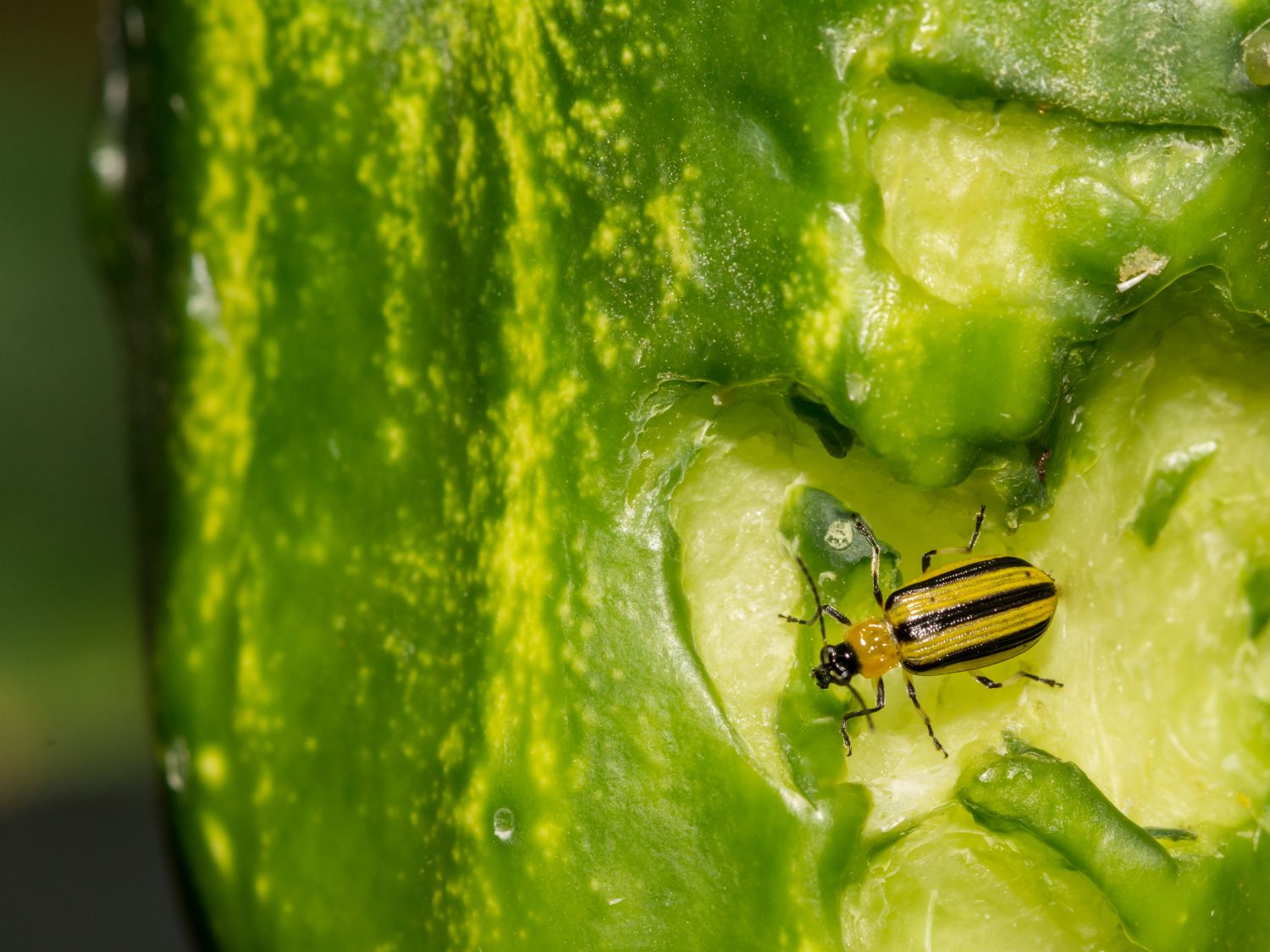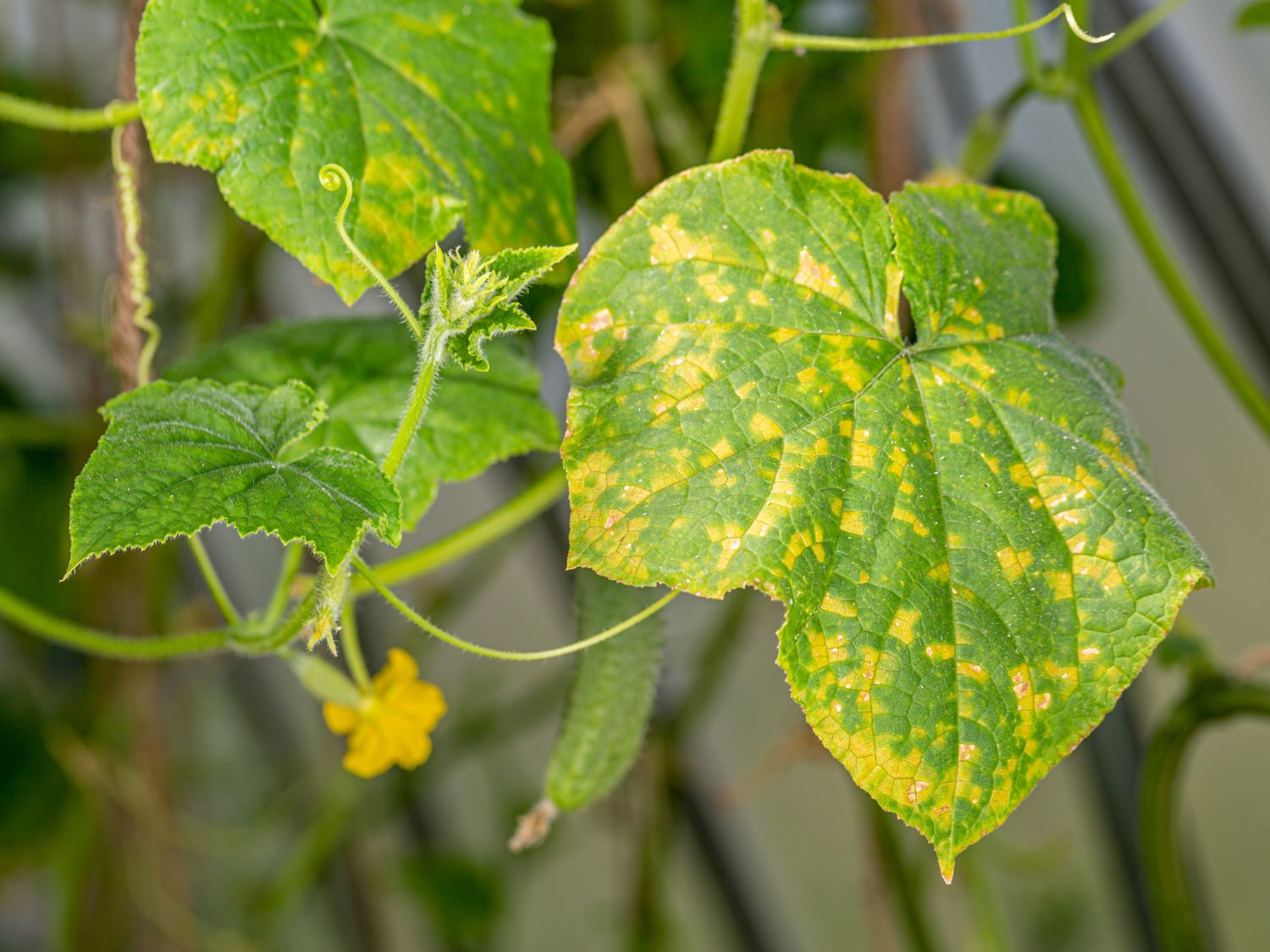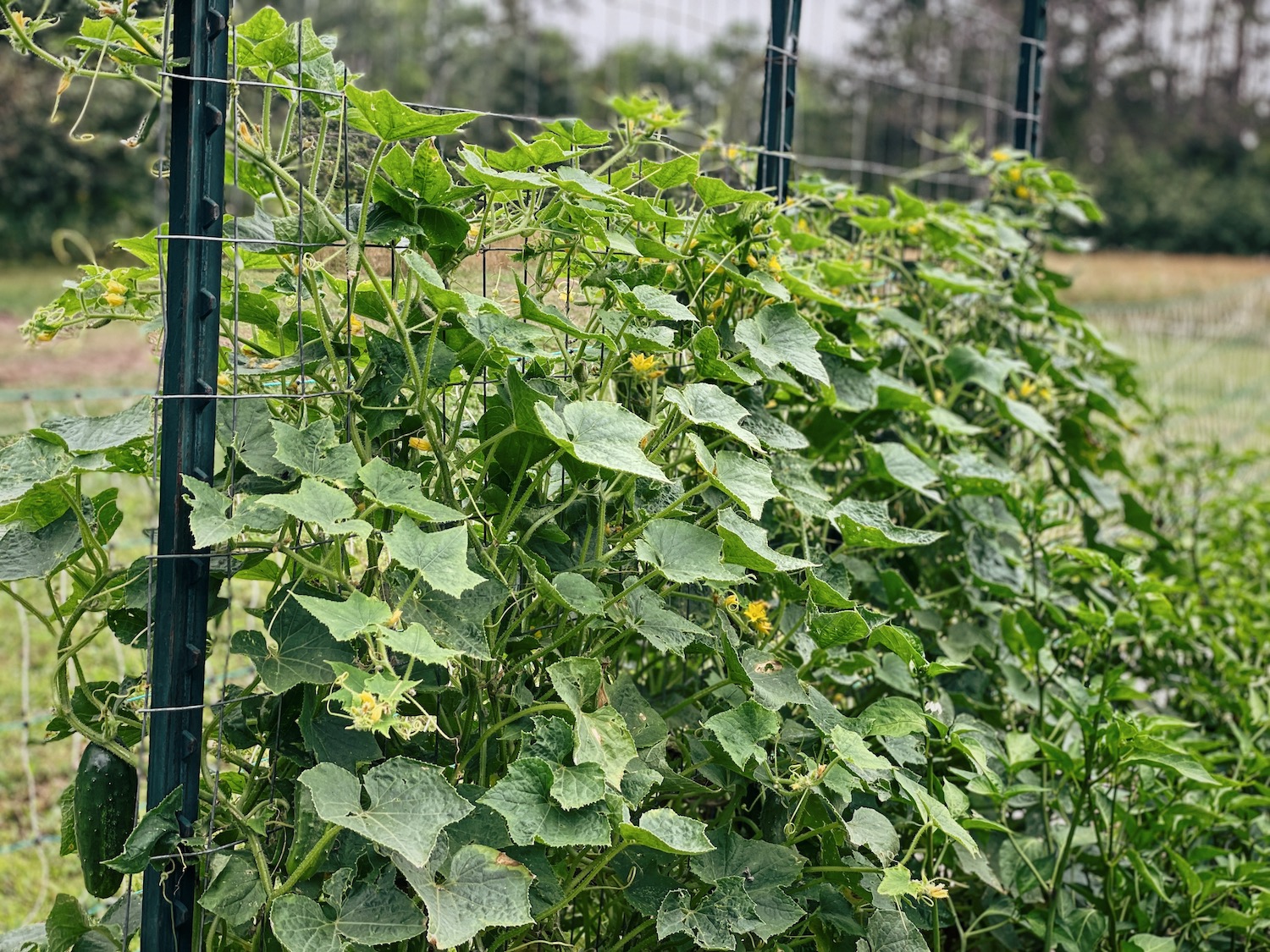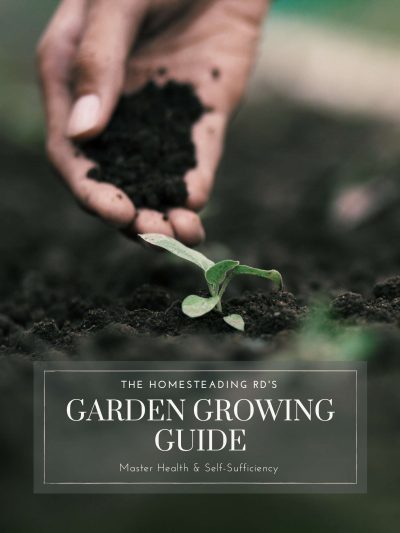Are your cucumber leaves turning yellow? This is a common occurrence in backyard gardens and can be disheartening. You’ve been taking care of your plants, and then boom! The leaves change out of nowhere and you’re left wondering if your plant is a goner or not.
Those vibrant, green leaves are not just for show; they play a vital role in photosynthesis, energy production, and overall plant vigor. Leaf changes are typically the first sign that something is off, so it’s important to address the cause quickly!
In this blog post, we’re going to talk through the 5 most common reasons for cucumber leaves turning yellow and exactly what steps you need to take to address it.
I’ll be there along the way to guide you through it. Let’s dive in!
*Disclosure: This post may contain affiliate links to products (including Amazon). I’ll earn a small commission if you make a purchase through my link, at no additional cost to you! Regardless, I only link to products that I personally use on our homestead or believe in.
5 Reasons & Solutions for Cucumber Leaves Turning Yellow
Changes in leaves are typically the first sign that something has gone wrong in a plant. Therefore, quickly identifying the cause and providing effective treatment is essential so you can still have a substantial harvest!
#1: Nutrient deficiencies
Nutrient deficiencies are a common problem that gardeners encounter. You may be adding compost every fall, but sometimes it doesn’t provide a balanced mix, resulting in too little (or too much!) of certain nutrients.
Common signs of nutrient deficiencies:
- Potassium: Leaves at the base of the vine (old growth) are yellow, but the main veins stay green. Leaves will eventually turn light tan with a scorched appearance.
- Nitrogen or magnesium: Leaves at the base of the vine (old growth) are yellow, but the main veins stay green. Stunted growth. Fruit will be small and susceptible to disease.
- Iron or manganese: Leaves at the tips of the vine (new growth) are yellow, but the main veins stay green. May notice some mottled discoloration with manganese deficiency as well.
How to fix it:
Start with a soil test to confirm your suspicions. You can use home testing kits (quick, but less accurate), or send samples to a lab using mail-in kits or your local extension office (slow, but very accurate).
The Homesteading RD's Product Picks: This home test kit comes with 40 tests and measures pH, nitrogen, phosphorus and potassium. Fast, easy and it only takes a few minutes! This home kit comes with 80 tests and measures pH, nitrogen, phosphorus and potassium. It's a bit more of a complex process compared to the 1601 test, but likely more accurate. A much more extensive test covering 13 different nutrients! Collect your home sample, mail it in, and obtain online results in 6-8 days along with tailored recommendations.
*Watch me conduct a soil test in my Instagram reel and definitely enroll in my How to Plan a Garden: Step-By-Step Course to learn ALL about soil health, soil testing, companion planting, plant spacing, and so much more!
Once you have your test results, you can address nutrient deficiencies. Never add replacements without first confirming a deficiency!
- Potassium: Greensand 0-0-3 (contains 22 trace minerals!), Langbeinite 0-0-12 (also high in magnesium), or wood ashes 0-1-3 (also increases soil pH)
- Nitrogen: Blood meal 12-0-0 (long-lasting, but can lower soil pH), fish emulsion 5-1-1 (requires frequent applications) or using cover crops (especially alfalfa)
- Magnesium: Dolomite Lime (also provides calcium, can increase soil pH)
- Iron: Iron-Tone 3-0-3. Avoiding calcium excess, high soil pH (>7.0), and improving soil drainage/aeration also improves iron availability.
- Manganese: No specific replacements, but ensure that soil pH remains <7.0 to improve bioavailability. If the soil pH is too high, add peat moss, compost, or sulfur.
#2: Overwatering or underwatering
Watering is a delicate dance in the garden. We don’t want too much, or too little. How can you tell if you’re too far on one side?
- Overwatering: Leaves are yellow toward the base of the plant
- Underwatering: Leaves are dry and yellow with brown, crispy edges.
If you aren’t sure, try measuring your soil moisture levels with a moisture meter and make sure that you’re testing down at the root level!
How to fix it:
If moisture is too high (especially if you have heavy, clay soil), start by improving soil drainage by loosening the soil with a broadfork, then adding compost, peat moss, coconut coir, or vermiculite.
You could also consider raised beds if your soil quality is absolutely terrible. If growing in containers, make sure that there are drainage holes in the bottom!
If moisture is too low: consider adding mulch to aid in moisture retention (I love organic straw from a local farm) and a drip irrigation system. You can also add a timer if you’re forgetting to water regularly.
#3: Pests
There are a few pests that can’t seem to resist those tender cucumber plants. The most common offenders are aphids, cucumber beetles, spider mites, and white flies. Not only can they cause unsightly damage, but they can transmit diseases such as the Cucumber Mosiac Virus and Cucumber Vein Yellowing Virus.
How to fix it:
- Squish bugs when you see them!
- Utilize row covers to provide a protective barrier
- Companion planting to attract beneficial and predatory insects
- Organic treatments, only if absolutely necessary. I like to use neem oil. Only spray at dusk and be careful when spraying to avoid pollinators (they like to sleep inside the flowers).
#4: Disease
Cucumbers are no stranger to diseases, unfortunately. There are few that are common to cucumbers and as a result, cause yellowing of the leaves. Let’s talk about them!
- Cucumber Mosaic Virus: malformed leaves with a yellow-colored mosaic, streaking or spotting pattern. Sometimes yellowing of the veins.
- Cucumber Vein Yellow Virus: yellowing of the veins (opposite of nutrient deficiencies)
- Fusarium Wilt: non-uniform yellow discoloration of the leaves, eventually causing the entire plant to turn yellow and wilt.
- Downy Mildew: angular yellow spots on the leaves that eventually grow together turning the entire leaf brown.
How to fix it:
Ensuring that you have good basic gardening practices going on in your garden is the first place to start. Make sure that your cucumber plants have proper airflow by growing up a trellis, allowing enough space between plants and pruning growth that’s too congested.
Mulching and utilizing drip irrigation (rather than overhead watering) helps as well. Don’t forget to rotate your plants every year, too! If this seems overwhelming, definitely check out my garden planning course where I’ll teach you all about it!
- Cucumber Mosiac Virus: There is no cure once it sets in. Discard infected plants and any surrounding debris promptly (not in your compost bin!). Maintaining strict aphid control and choosing resistant varieties can prevent reoccurrence next year.
- Cucumber Vein Yellow Virus: Maintaining strict whitefly control and choosing resistant varieties can prevent reoccurrence next year.
- Fusarium Wilt: There is no cure once it sets in. Discard infected plants and any surrounding debris promptly (not in your compost bin!). Maintaining strict aphid control and choosing resistant varieties can prevent reoccurrence next year.
- Downy Mildew: If you catch it early, you can treat it. I personally like neem oil. If the disease has progressed, discard infected plants and any surrounding debris promptly (not in your compost bin!). Choosing resistant varieties can prevent reoccurrence next year.
#5: Environmental Stressors
- Inadequate sunlight (less than 6 hours of direct sun daily): Leaves will appear pale
- Temperature extremes: Leaves will appear wilty and mushy (if freezing temperatures) or yellow/brown and crunchy (extremely hot temperatures)
- Herbicide damage: Leaves will have a diffuse mottled appearance, stripes, or a crunchy brown appearance.
How to fix it:
Environmental stressors are harder to fix, but there are a few things that you can do to try to save your cucumber plants.
- Inadequate sunlight: Move the cucumber plant if it’s in a container, or remove taller surrounding plants that may be blocking sunlight.
- Cold temperatures: It’s hard to protect cucumber plants from frost outside of a greenhouse because they are so tall (a floating row cover won’t cut it), but you can try draping a sheet or frost blanket over it on chilly nights.
- Hot temperatures: Add mulch (I like organic straw from a local farm) and water in the morning to keep the soil temperature down.
- Herbicide damage: Once the damage has been done, there’s not much you can do except avoid using herbicides in the future. Probably a movemovem anyway!
Bonus Reason #6: Old Age
If none of the above 5 causes seem to fit the bill, it could be that those leaves are just old and have reached the end of their life cycle. Cucumber plants don’t live forever!
These are the oldest leaves of your plant (at the base of the vines) and will appear pale and droopy. If none of the other 5 issues are going on, the rest of the newer growth should be healthy, green, and with vigorous growth and production.
All you need to do is just trim off the old, tired leaves. They are no longer contributing to the plant and can harbor pests and diseases.
5 Tips to Prevent Cucumber Leaves from Turning Yellow
Let’s talk prevention, shall we? Prevention is my favorite strategy, but it does take a bit of forethought and work. It’s totally worth it in the end!
#1: Regular monitoring
This one is pretty straightforward, but it’s easy to lose sight of during the busy summer months. Make sure that you’re spending at least 10 minutes in your garden daily just observing and making note of the changes happening. The sooner you identify an issue, the easier it is to fix it!
#2: Proper spacing
All garden crops have a preferred spacing. Some things like pumpkins need A whereasf room, where others like radishes and carrots like to be tightly spaced. Cucumbers are somewhere in the middle – place each cucumber plant 18″ apart. This allows for proper airflow and sharing of nutrients from the soil.
Lastly, make sure to grow them up a trellis so that they have proper airflow and stay up away from splashing soil. I like to use some cattle panel fencing secured with t-posts. If they are growing too thickly, prune some of the growth back.
#3: Crop rotation
This step is so important and is often missed. Crop rotation refers to moving plants to a NEW location every 4 years. If you put your cucumber plants in the same spot year after year, the disease spores and pests will continue to build up there. No thanks!
That doesn’t mean that you need to create a whole new garden space, just plant your cucumbers in a different spot within your garden.
#4: Companion planting
I love companion planting so much! Companion planting is the practice of placing certain plants together that live in harmony and benefit each other. There are a few different mechanisms in place that make improved growth and health a positive outcome.
Good companion plants for cucumbers:
- Bush beans
- Cabbage family
- Corn
- Dill
- Eggplant
- Lettuce
- Marigolds
- Nasturtiums
- Pea
- Radish
- Sunflower
- Tomatoes
#5: Mulching
Mulching may seem intimidating, but it doesn’t have to be! Not only does it moderate the soil temperature and reduce weed pressure, but it also reduces soil-borne diseases from splashing up on your cucumber leaves. It also encourages worm activity! My favorite is organic straw that I source from a local farm via Facebook Marketplace.
*If these gardening strategies seem overwhelming, definitely check out my course How to Plan a Garden: Step-By-Step! I’d love to teach you everything I know so that you can have a successful garden and have a supportive community along the way. Use my discount code “GARDEN” for 10% off!
FAQ About Cucumber Leaves Turning Yellow
What do overwatered cucumbers look like?
Overwatered cucumbers have an overall yellow look to them, mostly on the older leaves.
Should I cut yellow leaves off cucumber plants?
Yes. Once the leaf has turned color and is starting to die, it is no longer serving the plant. Plus, if it is due to disease, it’s best to remove it so it doesn’t continue to spread.
What does it mean when cucumber leaves turn yellow?
It could be due to a variety of different causes such as over or underwatering, nutrient deficiencies, pests, di,sease or environmental issues. Check out the above information for more details
Can I still eat the cucumbers?
Yes! They are still edible, but they may be on the small side if the plant has been struggling for a while. Go ahead and harvest what you can!
Other Gardening Articles You’ll Love
- Basil Plant Flowering? Here’s What to Do About It
- How to Use Neem Oil on Tomato Plants
- The Best Compost for Your Vegetable Garden
- The 5 BEST Soil pH Testers
Final Thoughts
The reasons behind cucumber leaves turning yellow and taking proactive steps to address this issue can make a world of difference in the health and productivity of your cucumber plants.
So, as you tend to your garden, keep a watchful eye on your cucumber plants, and don’t hesitate to apply the strategies you’ve learned here. Your garden will thank you with vibrant, green leaves and a delicious cucumber yield. Happy gardening!
*Information in this article was referenced from personal experience and/or from my favorite gardening book: The Vegetable Gardener’s Bible, unless otherwise noted.
The Homesteading RD's Product Picks: | |
This is THE gardening book to have! I've had my copy for over 10 years and it's the one that I keep going back to time after time. It provides design ideas for raised beds, compost bins, you name it! Plus helpful tables for pH ranges, companion plants and more. | |

